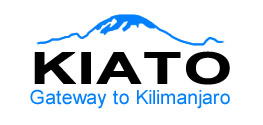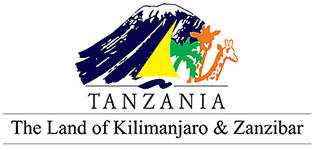Tarangire National Park
Tarangire National Park is famous for its huge number of elephants, giant Baobab trees and tree climbing lions. You can expect to see any number of resident giraffe, zebra, wildebeest and other antelope as well as less common animals including leopard. The Tarangire River is a consistent feeding vein for the area, attracting an enormous amount of animals during the dry season. Home to more than 550 species, the park is a haven for bird enthusiasts who can expect so see dozens of species. The swamps are the focus of the largest selection of breeding birds anywhere in the world.
Serengeti National Park
Serengeti National Park is Tanzania’s most famous national park and one of the most spectacular parks in the world. It is home to the famous wildebeest migration that takes place annually between May and July. The endless plains include infinite, almost treeless grassland dotted with rock kopjes (which large prides of lions love to sun on) and is most characteristic of the park, as well as open woodlands, swampy savannah and the mighty Grumeti River – home to enormous Nile crocodiles, hippos, Colobus monkey, and the martial eagle. The Serengeti holds the largest population of lions in Africa due to the abundance of prey species in addition to great herds of buffalo, smaller groups of elephant, giraffe, and thousands upon thousands of eland, topi, kongoni, impala and Grant’s gazelle.
Arusha National Park
Arusha National Park covers Mount Meru, a prominent volcano with an elevation of 4566 m, in the Arusha Region of north eastern Tanzania. The park is small but varied with spectacular landscapes in three distinct areas. In the west, the Meru Crater funnels the Jekukumia River; the peak of Mount Meru lies on its rim. Ngurdoto Crater in the south-east is grassland. The shallow alkaline Momella Lakes in the north-east have varying algal colours and are known for their wading birds.
Mount Meru is the second highest peak in Tanzania after Mount Kilimanjaro, which is just 60 km away and forms a backdrop to views from the park to the east. Arusha National Park lies on a 300-kilometre axis of Africa’s most famous national parks, running from Serengeti and Ngorongoro Crater in the west to Kilimanjaro National Park in the east.
The park is just a few kilometres north east of Arusha, though the main gate is 25 km east of the city. It is also 58 km from Moshiand 35 km from Kilimanjaro International Airport (KIA).
Ngorongoro Crater
Ngorongoro Crater is a conservation area and a UNESCO World Heritage Site located 180 km (110 mi) west of Arusha in the Crater Highlands area of Tanzania. Ngorongoro Crater is a large volcanic caldera recognized as one of the Seven Natural Wonders of Africa, abundant with game including elephants, rhinos, cheetahs, lions, leopards, and hyenas. The Crater is home to about 25,000 animals and is one of the last places in Tanzania where the Big Five can still be seen together, in numbers. The original volcano was probably as high as or higher than Kilimanjaro. The surrounding Ngorongoro Conservation Area is also internationally renowned as a ‘Biosphere Reserve’. It is a unique conservation area – where wildlife and the environment are protected, whilst the local Maasai are still allowed to live and continue their traditional, pastoral lifestyle.




